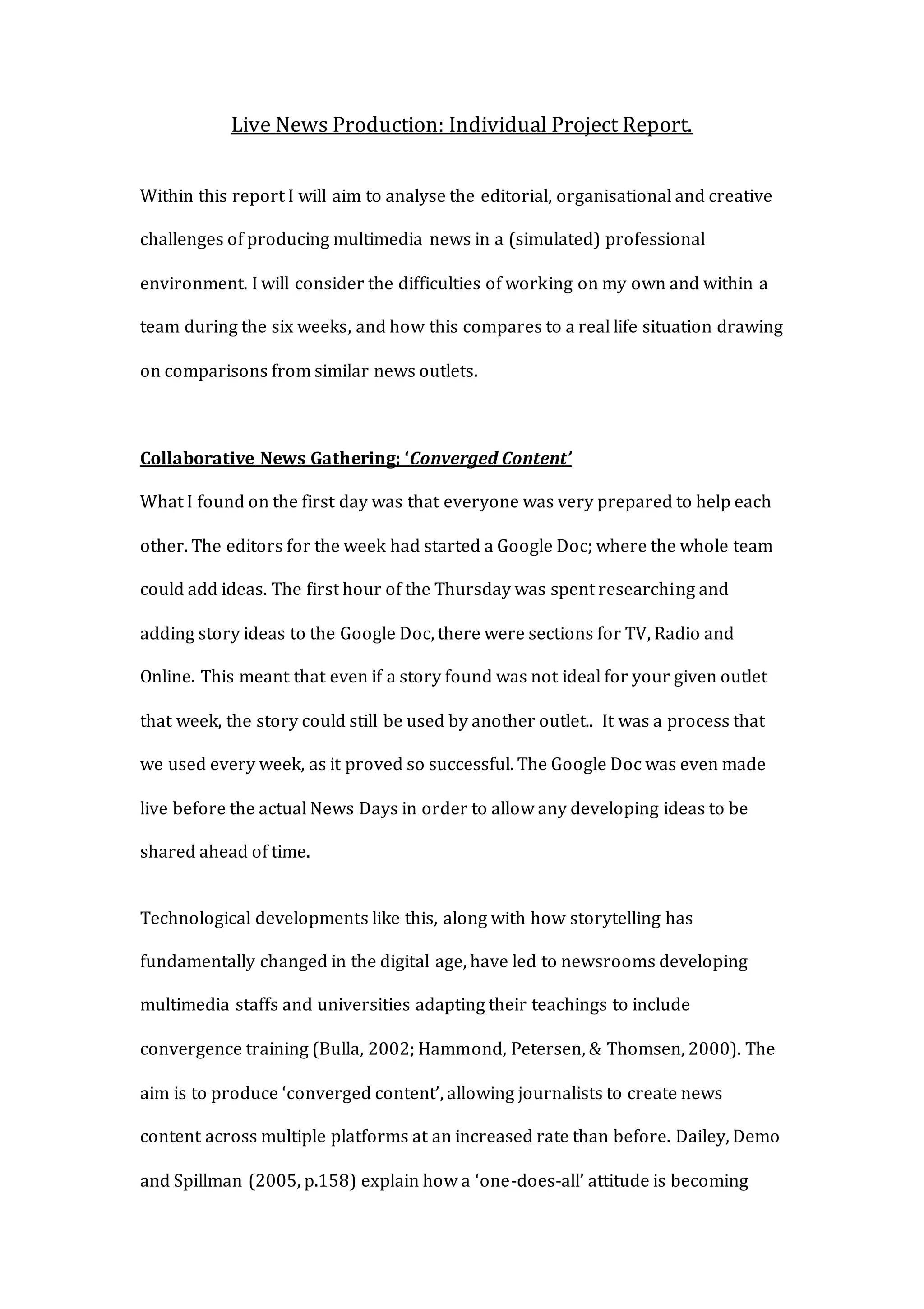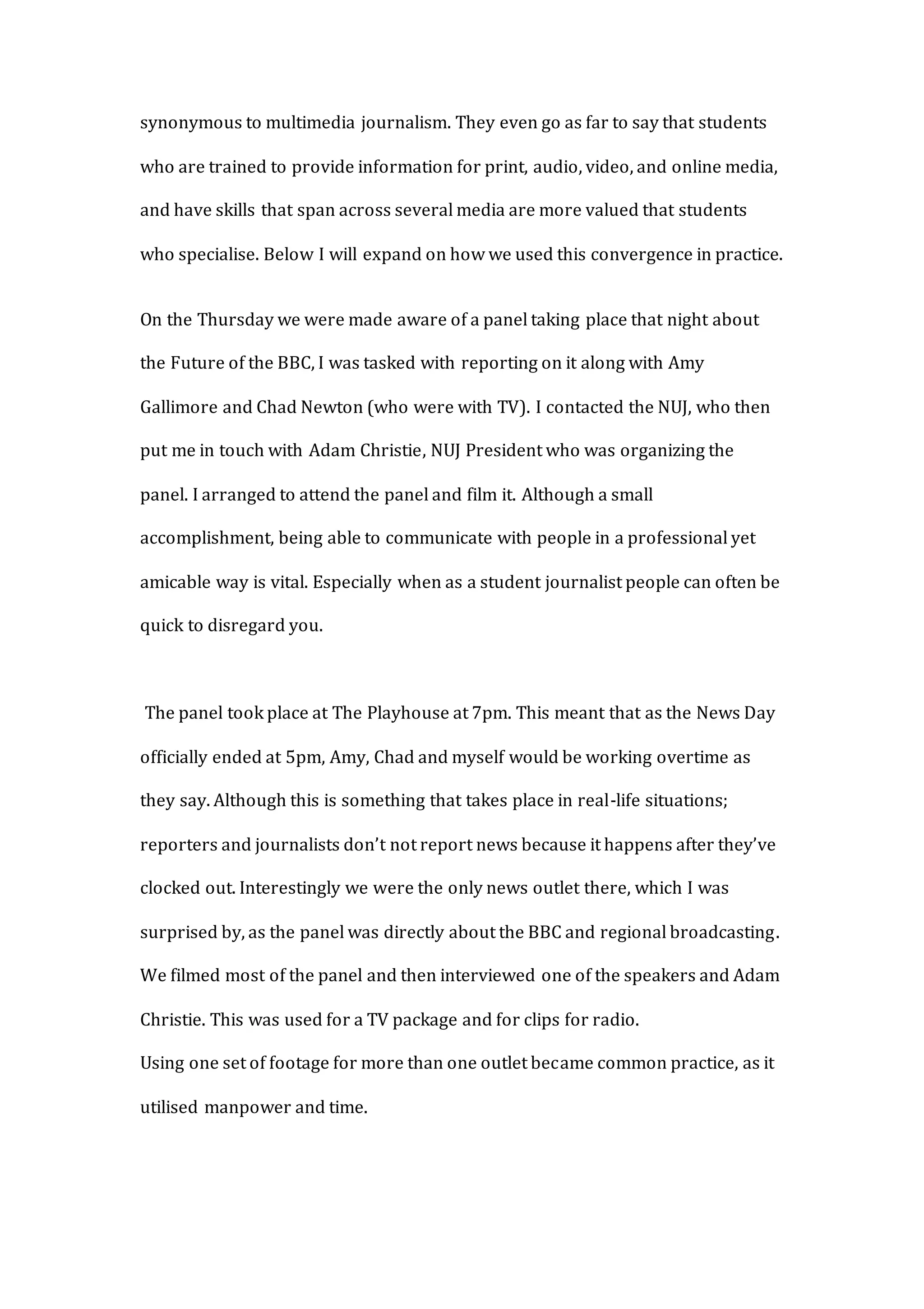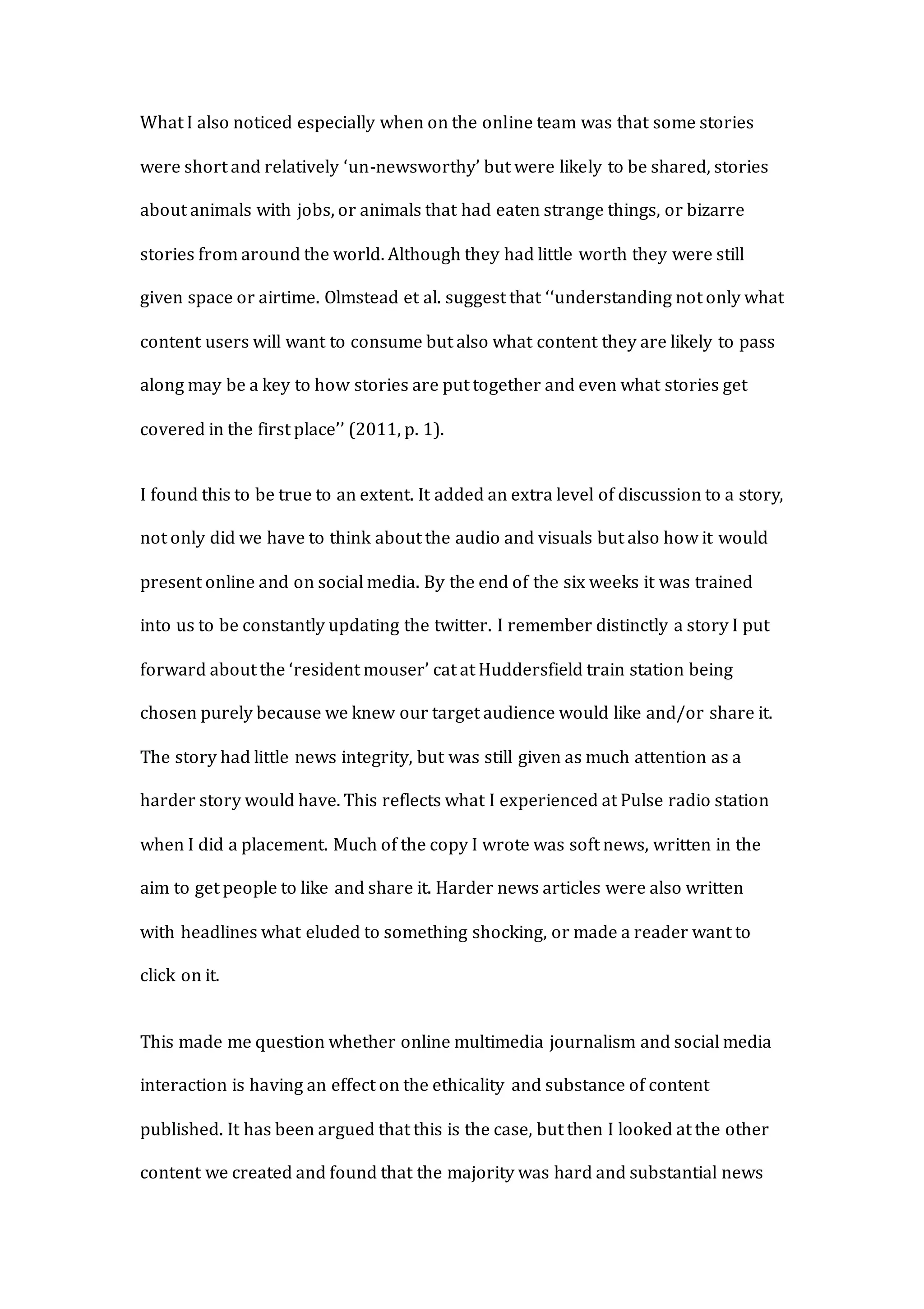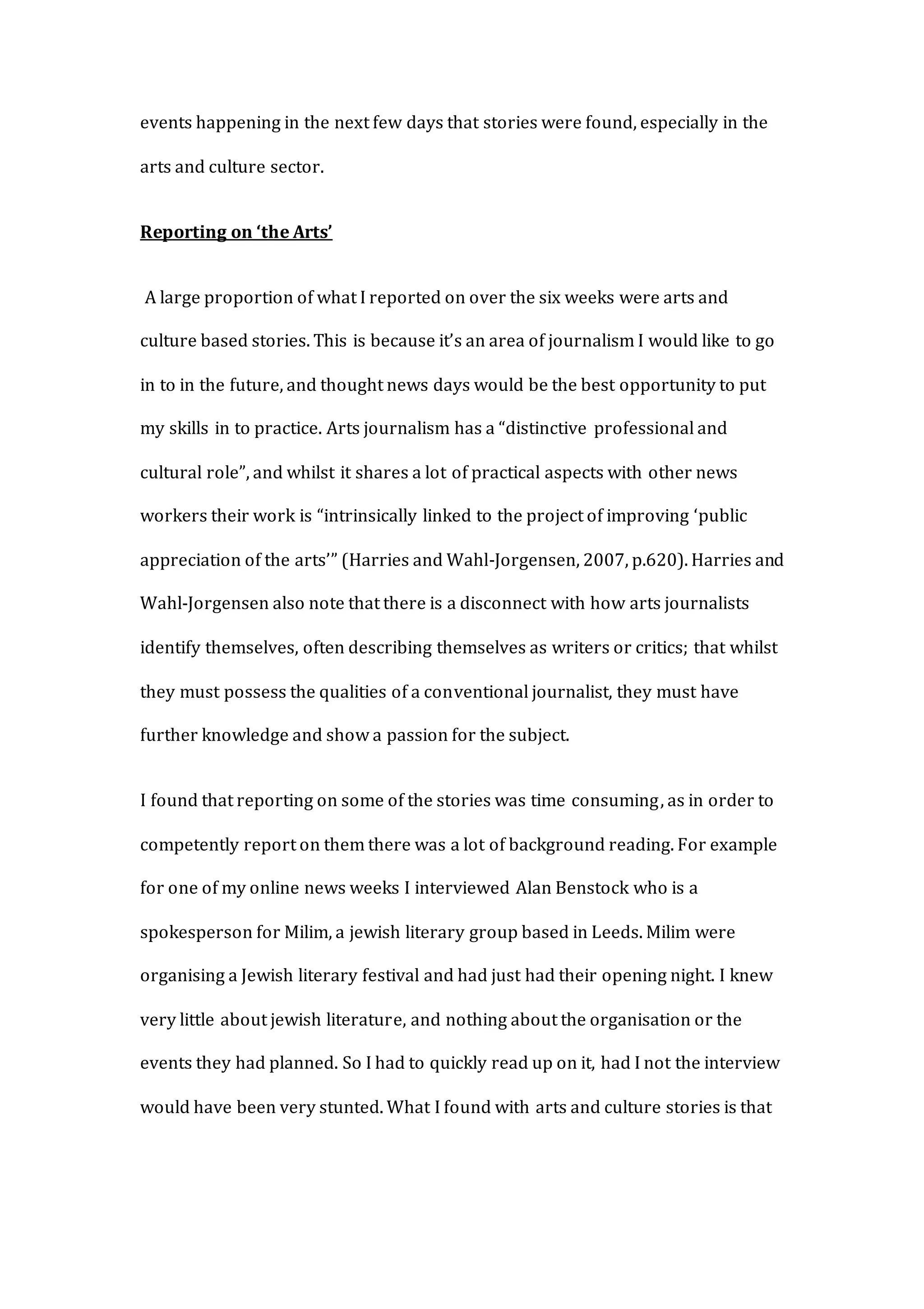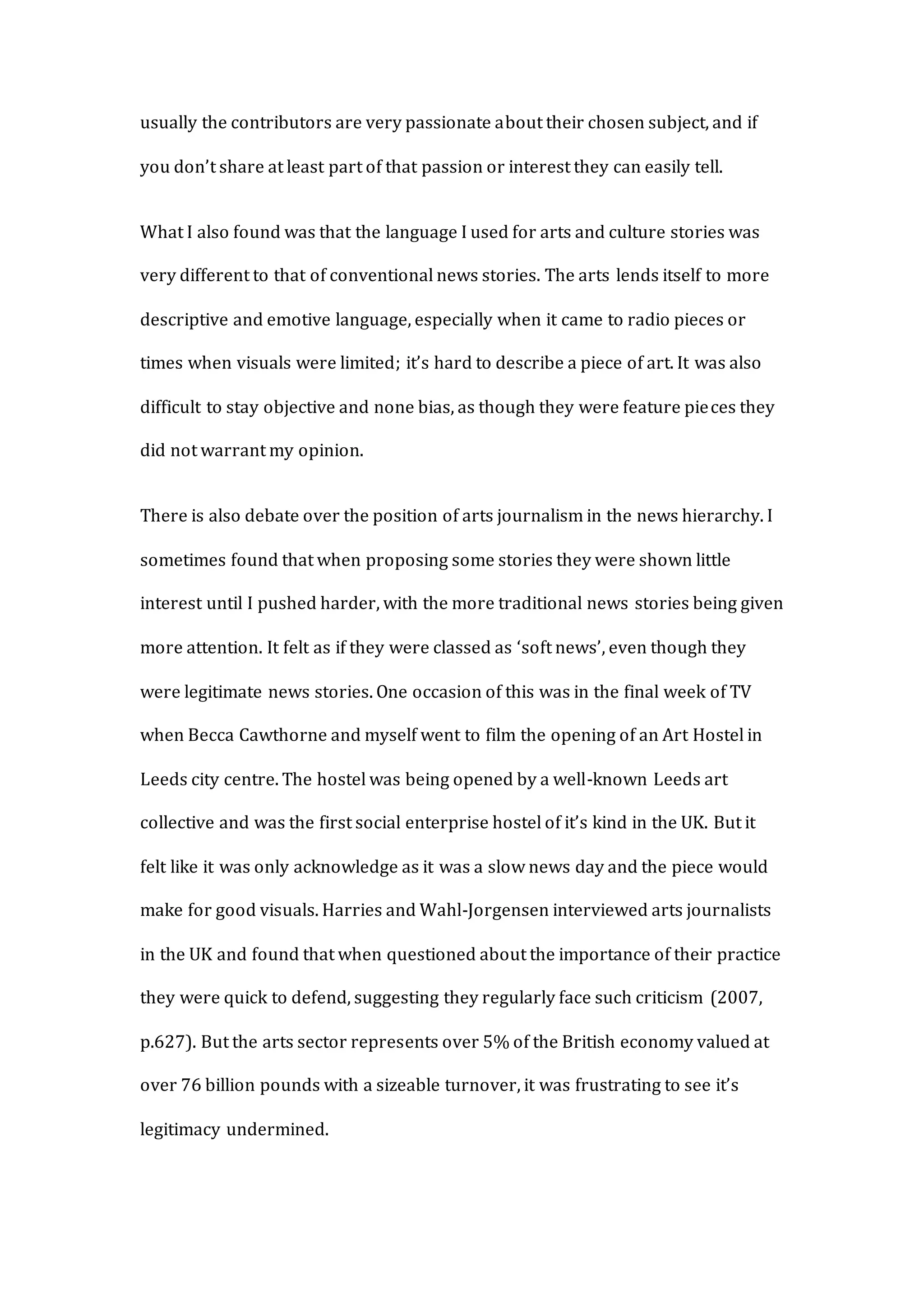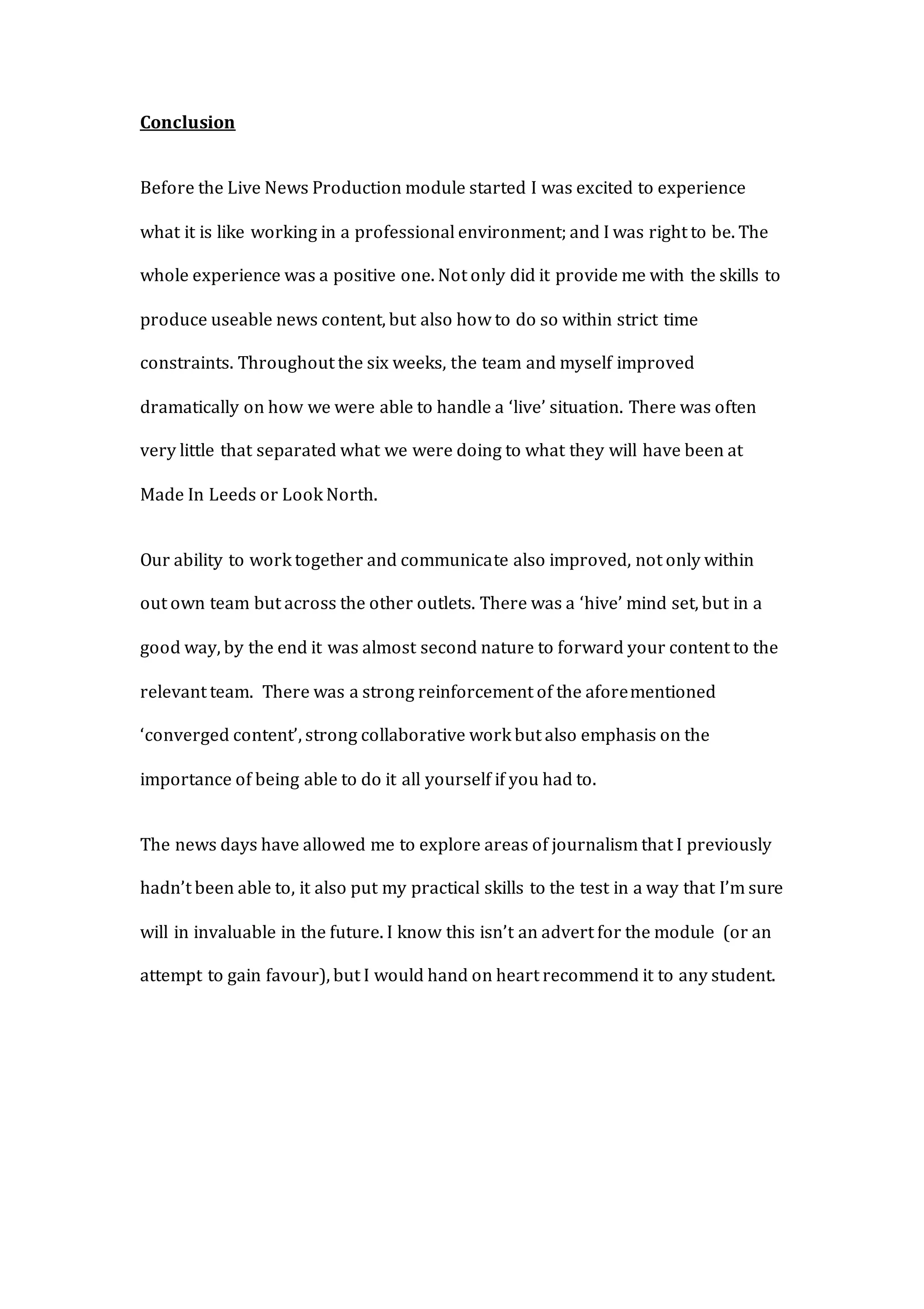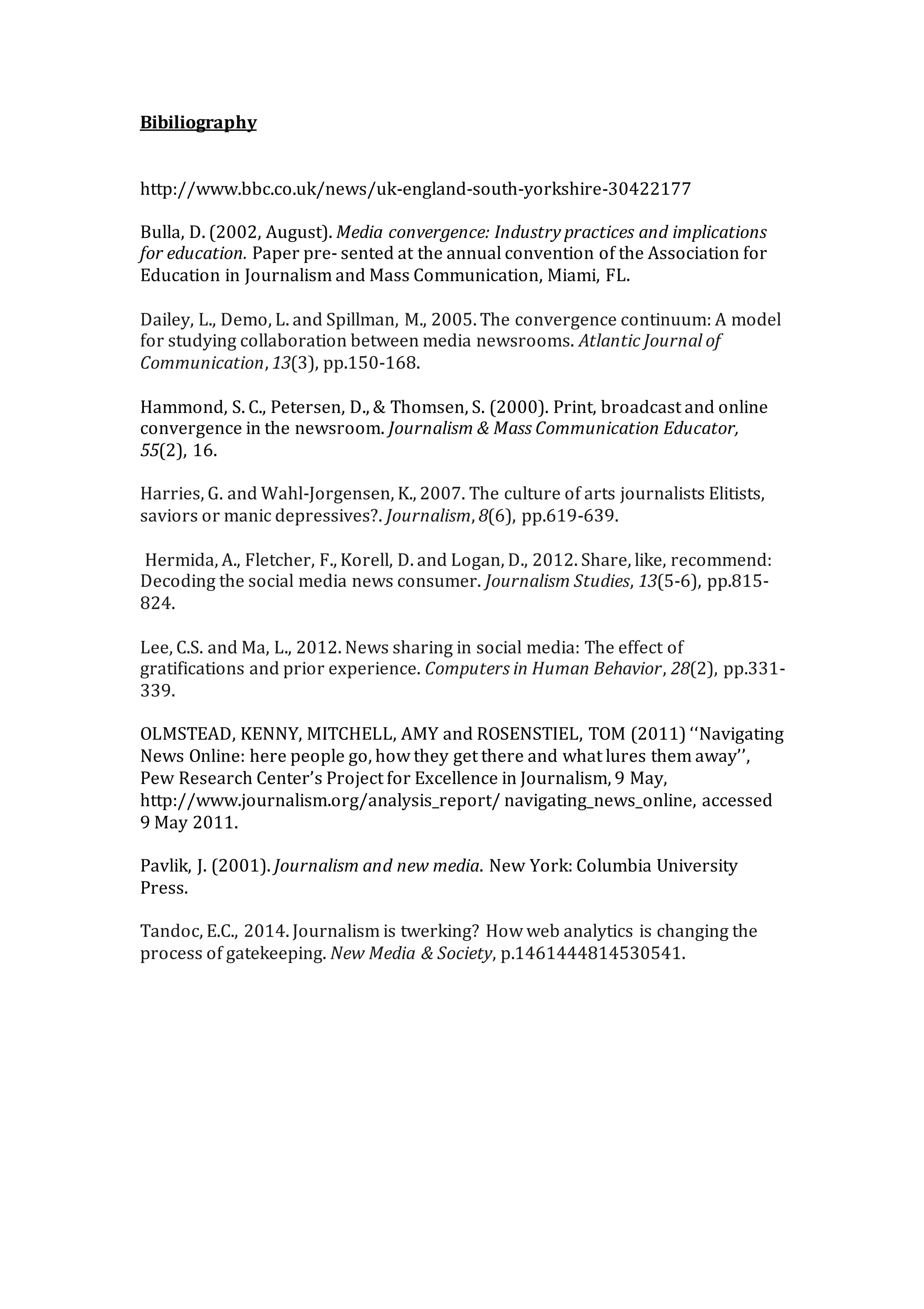The document summarizes the author's experience producing multimedia news content as part of a simulated professional news production project over 6 weeks. Some key findings include:
1) The team worked collaboratively, sharing story ideas and content across different media outlets. This converged content approach allowed more efficient use of resources.
2) Social media was heavily utilized to promote stories, share content live, and develop relationships with audiences. However, some "soft news" stories were prioritized for their social sharing potential over news integrity.
3) Arts and culture stories required extra research but the author found reporting in this area valuable experience. However, these stories were sometimes regarded as "soft news" despite being legitimate stories.
4
